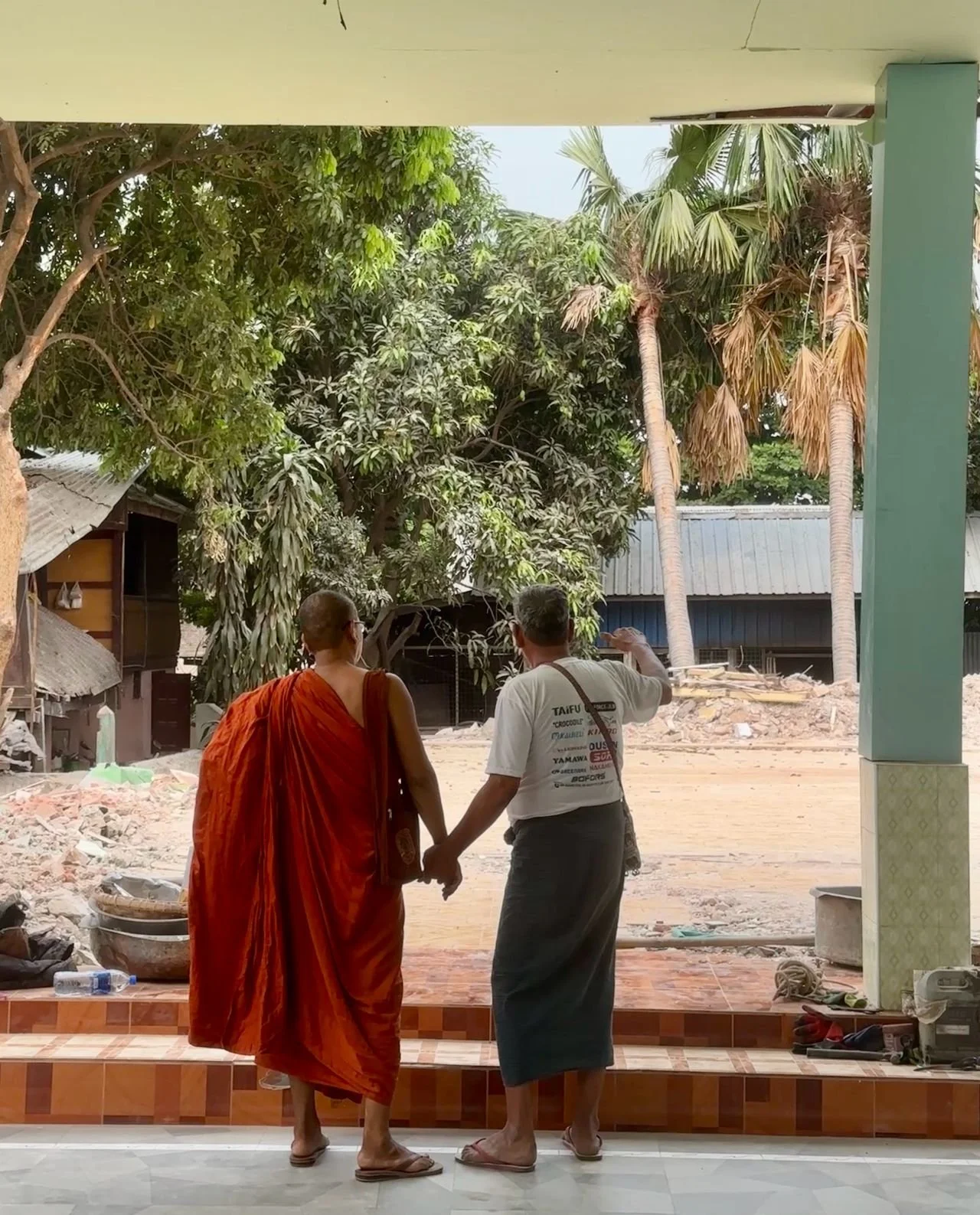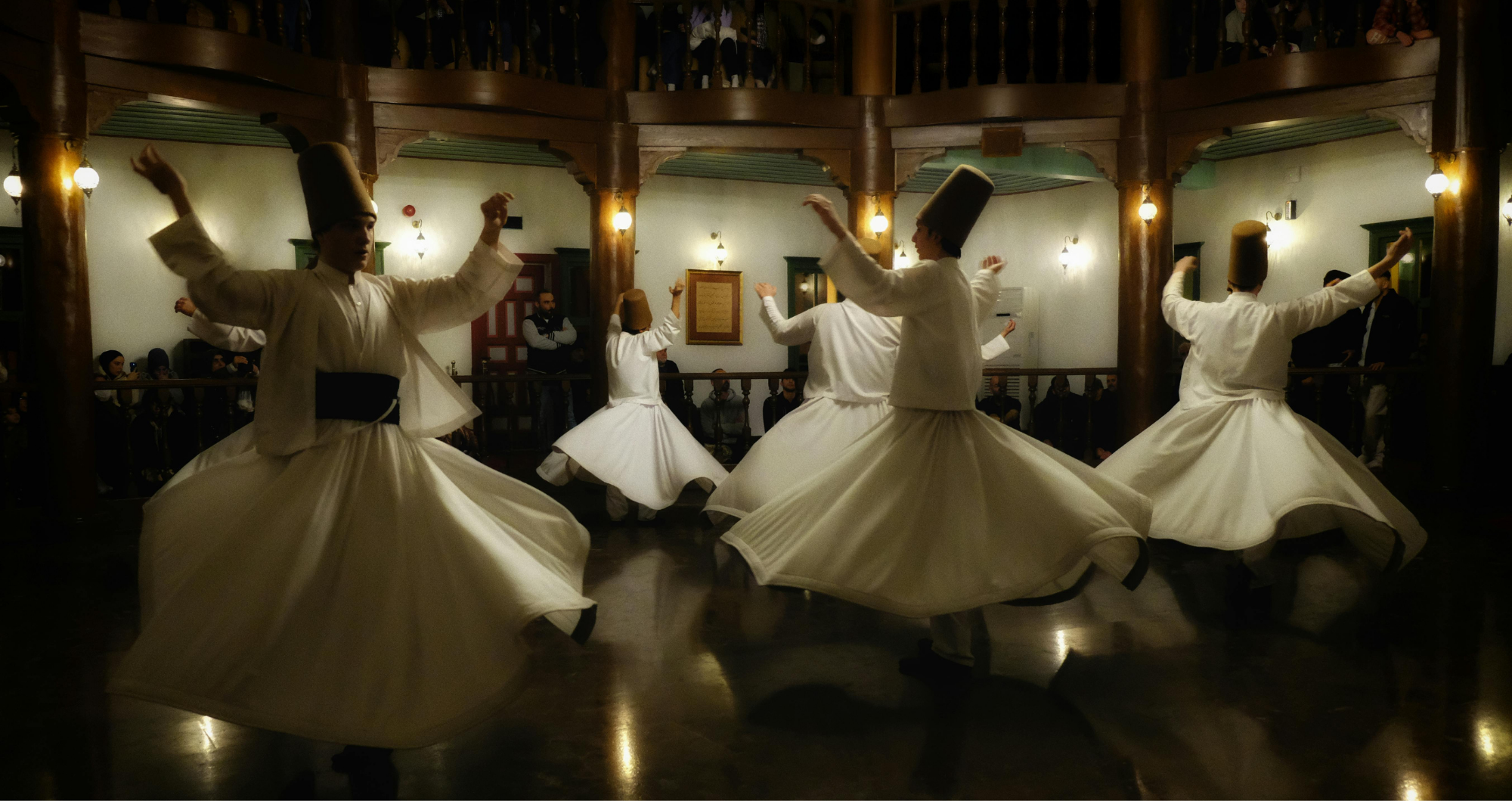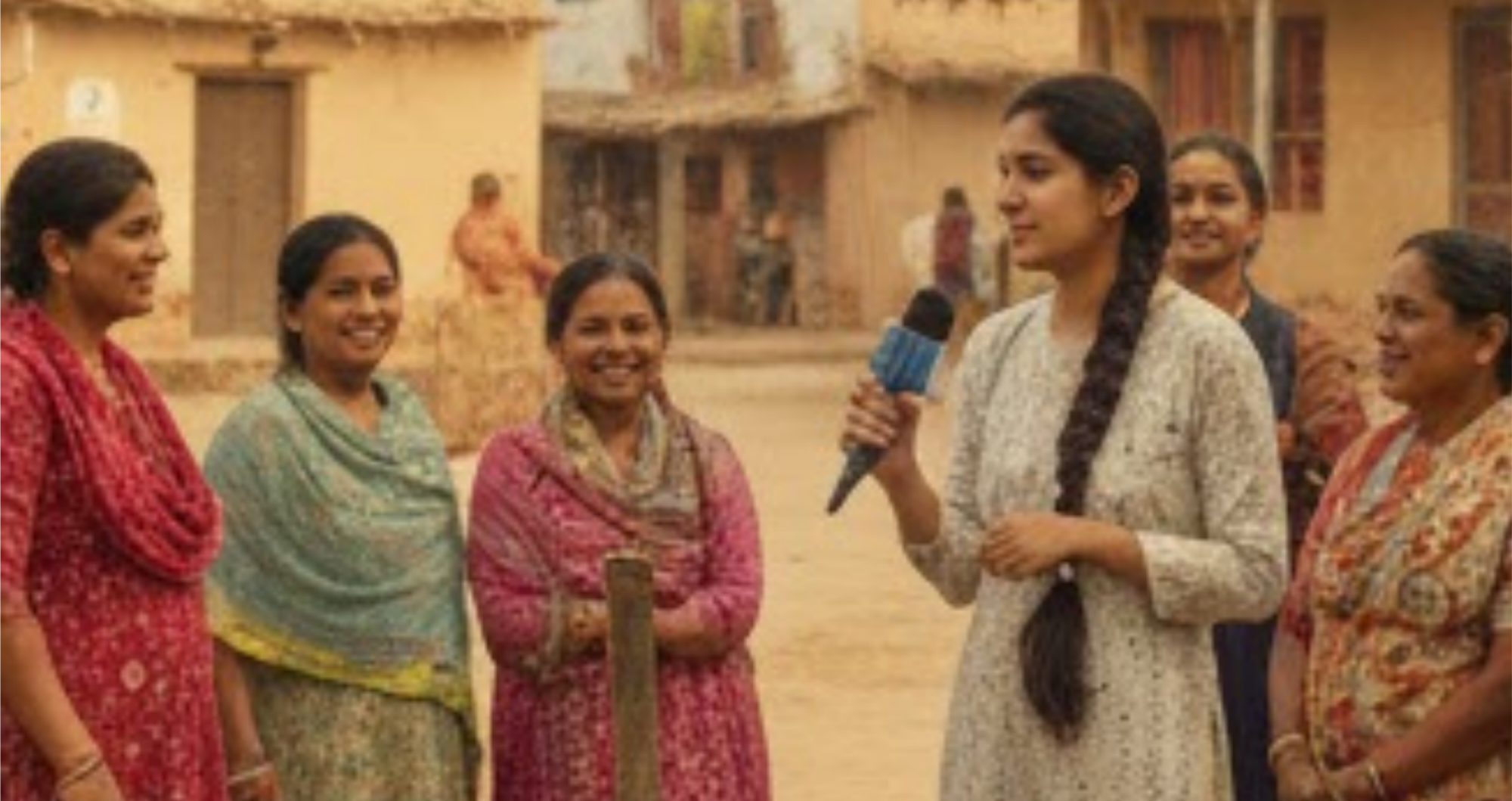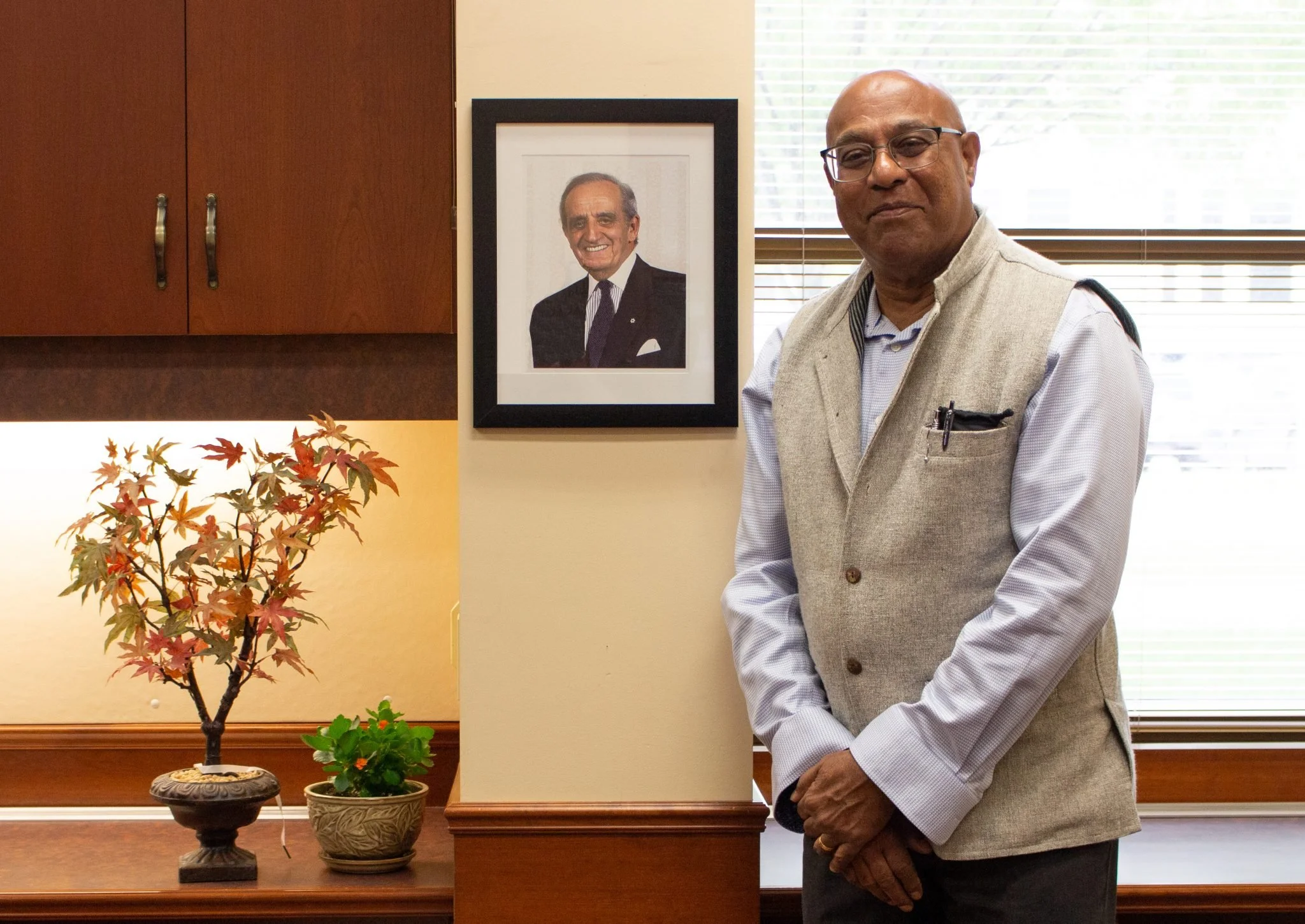Written By Qamar-ul Huda, PhD
In September 2025, Ojeikere Akhadelor interviewed Stanley Amaladas, PhD, the current Director of the Mauro Institute for Peace and Justice at St. Paul’s College, University of Manitoba. During the conversation, Dr. Amaladas reflected on his current thinking on peace dwelling and belonging, tracing how his journey and experiences have shaped his thinking on leadership. For Dr. Amaladas, the heart of leadership’s intention is peace. Below are excerpts from that conversation.
Introduction
What does it mean to live well with each other? For Dr. Stanley Amaladas, this is not an abstract philosophical puzzle but a question that has haunted him since his youth. It is a question born out of conflict, sharpened by exclusion, and deepened through reflection. From the riots of Malaysia in 1969 (History Rise, 2025) to his more recent experiences of racism in Canada, Amaladas has developed the idea of “peace dwelling”—a way of seeing and living in peace not just as a policy document, a treaty, or even a goal to be achieved after violence, but as a daily practice of safeguarding, healing, welcoming, and belonging.
In this conversation, Amaladas unraveled how his thinking about peace dwelling emerged, how it fits into and challenges existing peace leadership frameworks, and why belonging lies at the heart of any effort to live well together and to remain in peace. His responses invite us, as we envision the future generation of peace, to recognize that peace is not static; it is a lived practice that can transform how we relate to each other and the planet.
The Origin
Amaladas traces the origins of his vision of peace dwelling back to a moment of crisis that occurred when he was a young boy—on May 13, 1969—when political unrest in Malaysia erupted into violent riots after the federal elections. As opposition parties gained ground, clashes broke out between the Malay and Chinese communities. The Malaysian King suspended parliament, imposed martial law, and deployed military officers into neighborhoods.
As Amaladas tells it, “For the first time in my life, I was confronted with armed military officers in our neighborhood. The silence was deafening. I recall asking myself: What does living well with each other mean?”
That question became the seed of Amaladas’ lifelong peace journey. He saw firsthand how fragile coexistence could be, how quickly fear and mistrust could replace community, and how state responses often relied on suppression rather than reconciliation.
Dr. Stanley Amaladas, Director of the Mauro Institute for Peace and Justice at St. Paul’s College. Photo credit: University of Manitoba.
Later, while studying sociology and philosophy, Amaladas encountered Martin Heidegger’s 1976 essay Building, Dwelling, Thinking. Heidegger argued that “building is really dwelling”—that we do not build in order to dwell, but we dwell because we have built. This, he affirms with Heidegger, is our human condition, namely, that we are dwellers...To dwell, Heidegger suggested, is “the manner in which mortals are on earth.” For Amaladas, this offered a profound insight: peace is not an external structure we construct after conflict, but rather how we inhabit the world with one another. Peace dwelling is about the quality of our relationships and the daily choices we make.
Amaladas’ work is deeply relational. It is a relationship that is guided by his personal experiences, goals, and values, which motivate his profound engagement, extending beyond theory and philosophy. Living in Canada, he has faced exclusion and racism firsthand, hearing things like:
“Go back to where you came from.”
“You only got this job because of your color.”
Such remarks reinforced the painful experience of being told he did not belong. However, rather than turning away from the wound, Amaladas allowed it to deepen his conviction that belonging must be central to peace. Amaladas believes in the principle, “I Belong, You Belong, We Belong.”
This principle now undergirds his peace dwelling framework. To affirm belonging, he insists, is to embody the spirit of being a Guardian, Curator, Welcoming Presence, and Good Neighbour (these ways of being are described in more detail below). For him, peace leadership is not about authority or charisma. Instead, it is a relationship that affirms our shared humanity.
The Purpose
Peace leadership is still a growing field, and Amaladas sees a significant gap and disconnect in how it is often understood and practiced. For him, that gap can be bridged by reflecting on what it means to act.
He believes most existing peacebuilding, peacemaking, and peacekeeping paradigms focus on what happens after violence has broken out—this is essential, but reactive. To Amaladas, these types of actions are what Weber (1978) described as "instrumentally rational action," namely "conditions or means for the attainment of the actor's own rationally pursued and calculated end" (p. 24). Peacebuilding, peacemaking, and peacekeeping are social actions that are taken in order to attain or maintain peace as the desired end. This understanding of action resonates with James McGregor Burns’ (1978) formulation of the ‘test’ of practical leadership.
According to Burns (1978), “the test of the extent and quality of power and leadership is the degree of actual accomplishment” (p. 21) “...the actual test of practical leadership is the realization of intended real change that meets people's enduring needs" (p. 461).
Amaladas recalled the tragic story of General Romeo Dallaire, who led the United Nations mission during the Rwandan genocide. Despite his desperate pleas for resources, the international community abandoned Dallaire and his troops. In his book, The Peace: A Warrior's Journey, Romeo Dallaire shared, "When I begged for help, I was reminded there was no oil in Rwanda, no diamonds, nothing of strategic importance. There were only human beings—Black lives that didn't matter" (p. 1). For Amaladas, this chilling account highlights the limitations of peacekeeping when divorced from genuine human commitment. At the same time, he wonders if Dallaire’s inability to achieve what he intended means that he lacked leadership. It is here that he presents us with Joseph C. Rost’s voice. Rost was a professor of leadership and administration at the University of San Diego. For Rost (1991), while he also saw leadership as an “influence relationship among leaders and followers who intend real change that reflect their mutual purposes…“ (p. 102), he claimed that “leadership may still be leadership when the relationship fails to produce (intended) results” [Italics in original] (p. 118).
From the perspective of practical leadership (as defined above), this might be viewed as nonsensical. However, Amaladas connects Rost’s understanding of leadership effectiveness to Weber’s (1978) formulation of value-rational action, namely that which is “determined by a conscious belief in the value for its own sake ... independently of its prospects for success” (pp. 24–25). Amaladas notes that the strength of value rational action lies in something different: it compels us to act, to initiate something new, even when outcomes are uncertain. Every new initiative carries the risk of failing to achieve its intended results. Consider our world today—divisive, hostile, and polarized—conditions that directly oppose peace. Still, we hold on to peace as both a belief and a possibility. We keep initiating practices of peace, not because instrumental action has proven effective or ineffective, but because value-rational action sustains hope and makes space for what is yet to emerge. Value rational action pursues peace for its own sake—because it is Good.
“Leadership is experienced in how we choose to be with one another. Peace is not a finished product but the ongoing practice of dwelling together with care.”
Amaladas’ work on peace dwelling seeks to move the conversation forward from the perspective of value-rational action. Instead of waiting for violence to occur and then deploying frameworks (instrumental-rational action), he asks: “How can we live differently so that violence does not become our default outcome?” To decisively address this question, Amaladas returns to the linguistic roots of "dwelling." As Heidegger (1976) noted, the old Saxon word wuon means to remain and stay in place, while the Gothic word wunian carries a more profound meaning: to dwell in peace, safeguard, and preserve each other from harm.
This insight reshapes our understanding of both leadership and peace. They are not external “things” to be built, counted, or measured. Instead, they are qualities of a relationship. Leadership is experienced in how we choose to be with one another. Peace is not a finished product but the ongoing practice of dwelling together with care. In this way, he views peace as both a noun and a verb.
Amaladas argues that reframing leadership and peace in this context frees us from seeing them as technocratic projects and helps us see them as deeply human and relational endeavors.
The Practice
When asked to share the unique contributions peace dwelling offers compared to other leadership or peacebuilding frameworks, Amaladas posited that while numerous peacebuilding frameworks exist, peace dwelling offers a distinctive contribution because it arises from deep questions of how we choose to live together in ways that do not destroy each other. In this way, peace dwelling is a deeply relational and experiential process, grounding peace leadership in authentic human encounters and everyday realities.
He offers four ways of being in his peace dwelling framework:
Guardian – safeguarding others from exclusion and harm.
Curator/Healing Agent – tending to wounds and repairing damage.
Welcoming Presence – opening arms to others, especially strangers.
Good Neighbour – being present and responsive in both good times and bad.
Amaladas is quick to note that this framework is not meant to be a blueprint to impose on others but an invitation to reflect on how we choose to relate and live with each other and our planet. It provides language for the practices of care and belonging that often go unrecognized but are essential to human flourishing. He also explained that these four ways of being emerged within the context of a personal experience, which he used as a “case study” in his formulation of peace dwelling. As he says, “Frameworks without context are like templates from Google—free, but useless and meaningless.”
Amaladas also connects his framework to Burns’ (1978) understanding of leadership as “consciousness-raising” (p. 43). Leadership, Amaladas argues, must engage both head and heart while moving people to purposeful action. Within peace dwelling, that purpose is sacred: to treat persons like persons.
From the perspective of instrumental action, Amaladas acknowledges the widespread yearning for “application” because people want to act and make a difference. While institutions like the United Nations have offered frameworks, such as the Sustainable Development Goals, he insists that peace dwelling begins with basic practices of how we conduct ourselves and how we relate to one another and the planet.
According to Amaladas, the heart of peace dwelling are value-rational actions such as “listening, caring, protecting each other from harm and danger, seeking first to understand, dignifying each other and the planet with respect, treating persons as persons, belonging, showing compassion, making oneself available to others in good and bad times, and greeting each other with open arms as if the other is a friend.”
These simple yet complex practices, he argues, cannot and should not be reduced to policy mandates. He posits, “Can you imagine the ridiculousness of developing an organizational policy on listening!” Instead, these are practices educators and community leaders can embody and teach, shaping cultures of dwelling in peace.
The Future
Some may argue that peace dwelling sounds idealistic or too abstract to address the hard realities of war, displacement, and systemic injustice. Amaladas does not deny the charge; he embraces it. As he shared, “It is precisely because of our hard realities of war, hate, bigotry, forced migration, internal displacement, the presence of diabolically narcissistic persons in positions of political authority, and so forth, that we need to raise and address the hard question of what it means to dwell in peace.”
Rather than dismissing peace dwelling as abstract, he insists it is most urgent in contexts of violence and division. Amaladas’ aspirations are both simple and profound: “Keep asking: how do we live well with each other?” According to him, asking this question is not a distraction from harsh realities—it is a significant way to begin transforming them.
He hopes communities will continue to wrestle with this question, allowing it to guide their choices. For him, peace dwelling is not a final answer but an ongoing inquiry. If individuals and groups commit to preserving, safeguarding, and repairing relationships even after harm has occurred, they nurture the imagination of what could be. Moreover, in that imagination, peace begins to take root.
“Amaladas’ aspirations are both simple and profound: ‘Keep asking: how do we live well with each other?’ According to him, asking this question is not a distraction from harsh realities—it is a significant way to begin transforming them.”
For Stan Amaladas, peace is not something waiting to be built after conflict. It is already here, waiting to be lived. Through belonging, healing, welcoming, and neighbourliness, peace dwelling reframes leadership as the art of living well together.
His challenge to us all as we endeavor to foster a new generation of peace is urgent yet straightforward: “move beyond theories, frameworks, and abstract policies. Instead, let our shared experiences and daily choices guide how we dwell—in peace—with one another and the planet.”
References
Amaladas, S. (2024). Peace leadership: A story of peace dwelling. Cambridge Elements. Cambridge University Press.
Amaladas, S. (2018). Leadership effectiveness and the problem of social action: Continuing the conversation between Burns and Rost, Leadership, 15(5), 1-18. Sage. https://doi.org/10.1177/1742715018787909
Burns, J.M. (1978). Leadership. Grove Press.
Dallaire, R. (2024). The peace: A warrior’s journey. Random House Canada.
Heidegger, M. (1977). Building, Thinking, Dwelling. In D. Krell (Ed.), Basic writings (pp 323-329). Harper & Row.
History Rise (2025, August 22). The May 13 incident in Malaysia: Understanding racial tensions and lasting impact. https://historyrise.com/the-may-13-incident-in-malaysia-understanding-racial-tensions/
Rost, J. (1991) Leadership for the 21st Century. Praeger Publishers.
Weber, M. (1978) Types of social action. In: Roth G and Wittich C (eds) Max Weber: Economy and Society, Vol. 1, pp. 24–26. University of California Press.
Issue 03 | Reimagining a New Generation of Peace
-

No Planet, No Peace: Reimagining Peacebuilding through Planetary Stewardship
-

When the Earth Shook, Faith Held Us Together
-

Reimagining Peace through Rumi’s Lenses: A Voyage into Poetic Wisdom, Politics, Diplomacy, and the Transcendental
-

An Alternative Peacebuilding Vision in a Post-Liberal Era
-

Sing My Soul
-

Reimagining a New Generation of Peace with Servant Leadership and Nonviolent Communication
-

Threading the Future: Mentoring the Next Generation of Peacebuilders
-

If We Can Teach AI to Practise Empathy: Nonflict and a Generation of Peacemakers
-

Peace Leader Spotlight | From Grandmother’s Legacy to Global Peacebuilding: Issah Toha Shamsoo
-

Young Leaders for Peace: Meeting the Moment through Youth Peace Leadership Development at the University for Peace
-

Reimagining Peace Through Young Voices in India: Spotlight on Women Journalists and Their Stories
-

Peace Dwelling and Belonging: Stan Amaladas on rethinking what it means to live well with each other
-

Pockets and Peace Design: A collaborative design framework to advance health equity and build peace
-

From Shrinking Spaces to Shared Strategies: Insights from Central Asia on how to build collective action for conflict prevention and peacebuilding
-

From War Memories to Peace Encounters: Constructive Usage of Veteran Experience
-

Call for Submissions | Issue 04


